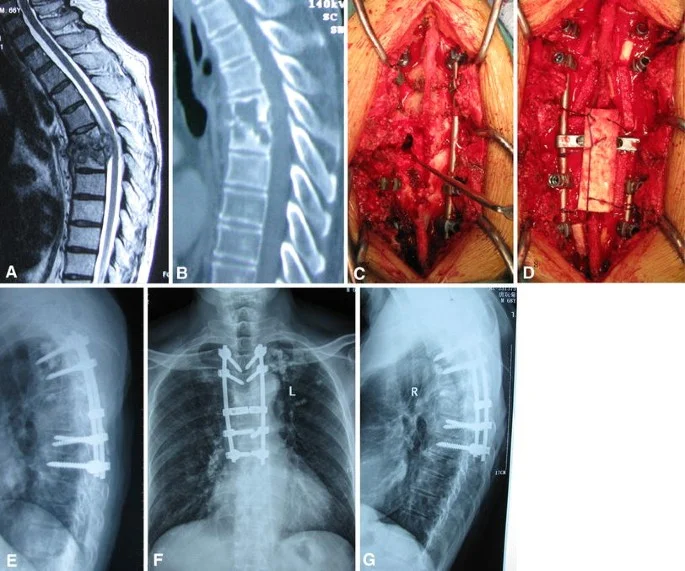Spinal tuberculosis, also known as Pott’s disease, is a severe manifestation of tuberculosis that affects the vertebral column. It remains a significant health concern, particularly in regions with high tuberculosis prevalence, such as India. Surgical intervention becomes necessary in cases where medical therapy alone is insufficient, especially when there is spinal instability, neurological deficits, or severe deformity.

Clinical Presentation
- Back pain: Often the earliest and most common symptom.
- Constitutional symptoms: Fever, night sweats, weight loss.
- Neurological deficits: Weakness, numbness, or paralysis due to spinal cord or nerve root compression.
- Spinal deformity: Kyphosis resulting from vertebral collapse.
Diagnosis
- Pain: Persistent back or neck pain that may radiate to other parts of the body.
- Neurological Deficits: Numbness, weakness, or tingling in the limbs.
- Motor Skill Impairment: Difficulty walking or maintaining balance.
- Bladder and Bowel Dysfunction: Loss of control over bladder , bowel movements.
Indications for Surgical Intervention
- Neurological deficits: Progressive or severe deficits not responding to medical therapy.
- Spinal instability: Due to extensive vertebral destruction.
- Severe kyphosis: Particularly in the thoracic spine, leading to cosmetic and functional issues
- Large abscesses: Causing compression or not resolving with medical therapy.
- Failure of medical therapy: Persistent or worsening symptoms despite adequate ATT.
Surgical Techniques
- Thorough removal of necrotic tissue, abscesses, and sequestra is crucial to reduce the bacterial load and promote healing.
- Relieving pressure on the spinal cord and nerve roots is essential in patients with neurological deficits.
- Instrumentation using pedicle screws and rods restores spinal stability, allowing for early mobilization and reducing the risk of deformity progression.
- Bone grafting promotes fusion of the affected segments, providing long-term stability. Autografts, allografts, or synthetic materials may be used based on availability and patient factors.
Postoperative Care
- Anti-tubercular therapy: Continued for a total duration of 12-18 months, depending on the patient’s response.
- Immobilization: Bracing may be required to support spine during the healing phase.
- Rehabilitation: Physiotherapy to restore function and strength.
- Monitoring: Regular follow-up with imaging and also with laboratory tests to assess healing and detect any recurrence.
Conclusion
Spine tumor surgery in Nagpur has evolved significantly, with advancements in surgical techniques and supportive healthcare infrastructure contributing to improved patient outcomes. Residents have access to skilled medical professionals and state-of-the-art facilities, making Nagpur a viable destination for those seeking treatment for spine tumors.
Book an Appointment
Are you suffering from chronic back pain, sciatica, herniated discs, or spinal deformities? Don’t let spine problems limit your life! Contact Us
